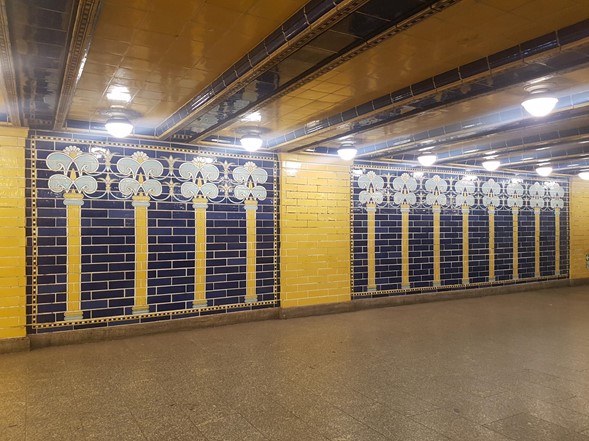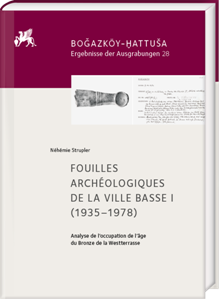21.02.2023 by Benjamin Scheel
In this blog post, I would like to look at an example of the reception of ancient Near Eastern art in twentieth-century Berlin.
In Germany at the turn from the 19th to the 20th century AD, there was a huge fascination with the history and cultures of the ancient Near East. With the excavations and finds of Heinrich Schliemann (1822–1890), a wealthy German businessman and excavator, at Troy in 1871–1873, the German public became more and more interested in the archaeology of ancient Rome and Greece, and in the course of time their interest in the archaeology of ancient Mesopotamia grew as well.
Kaiser Wilhelm II (1859–1941), who visited several places in the Near East during his famous trip in 1898, including Damascus, Jerusalem, and Constantinople, was an admirer of ancient Near Eastern archaeology and history. The Kaiser’s interest was not only research-related but also related to the imperialistic and colonialist ambitions of the German Reich, which was in competition, at the time, with the two great European imperialist powers, Great Britain and France.
In 1898, the Deutsche Orient-Gesellschaft (DOG) was founded by (amongst others) the Berliner art patron and cotton trader James Simon (1851–1932) and Bruno Güterbock (1858–1940), a private scholar and donor of the Königliche Museen zu Berlin. The DOG was the successor of the so-called Orient-Comité. The Comité was originally founded to investigate the „Trümmerstädte” of the Ancient Near East. The DOG was founded to finance German archaeological expeditions and excavations in the Near East and to lend the discovered and exported archaeological findings to the Vorderasiatische Abteilung of the Königliche Museen zu Berlin. The DOG was supported, financially and politically, by Kaiser Wilhelm II.
Through the efforts of James Simon, the DOG and the Königliche Museen zu Berlin (later Staatliche Museen zu Berlin), the first German archaeological expedition in the Near East began at Babylon in 1897. The two members of this survey were the architect and building researcher Robert Koldewey (1855–1925) and the orientalist Eduard Sachau (1845–1930). The survey was followed by extensive excavations, conducted by Robert Koldewey, at the same place from 1899 up to 1917. The main goal of this archaeological fieldwork was the discovery of ancient architectural remains and works of ancient art that could be brought to Berlin and presented at the Vorderasiatische Abteilung of the Königliche Museen zu Berlin.
From the very beginning of this archaeological expedition, one focus of the archaeological fieldwork at Babylon was the characteristically colorful- and beautifully glazed bricks found (amongst other findspots) at the Ishtar Gate, the Processional Way, and the throne room façade of the so-called Südburg. More than half of the archaeological finds at Babylon were fragments of glazed bricks. Most of them were dated to the reign of the Babylonian king Nebuchadnezzar (604–562 BCE).
Once the excavations at Babylon had gotten underway, the DOG published the first graphic reconstructions of the ornamented glazed-brick façades (e.g., lions, and floral adornments). Little by little, the facades of the Ishtar Gate, the Processional Way, and the throne room façade of the Südburg could be reconstructed. This publication made a huge impact on the interested public.
Around 1900 the Swedish architect Alfred Grenander (1863–1931), based in Berlin, was commissioned by the Gesellschaft für elektrische Hoch- und Untergrundbahnen in Berlin to design train stations for the Berlin U-Bahn. Famous examples for his architectural work on Berlin train stations are the U-Bahnhof Wittenbergplatz (1910–1913), the U-Bahnhof Krumme Lanke (1927/1928), and the U-Bahnhof Alexanderplatz (1927–1931). He also designed the U-Bahnhof Klosterstraße in Berlin-Mitte, which was opened in 1913. It was built in 1911–1913 and contained a mezzanine, which was necessary because of the station’s relatively deep location in the vicinity of the river Spree. For the walls of this mezzanine, Grenander designed a special polychrome decoration, consisting of glazed tiles. The glazed tiles, dominated by the colors blue and yellow, depict stylized palm trees. The walls of the southern part of the mezzanine have in total 38 palms on several walls with double volutes at their top ends (see Fig. 1), while the northern part of the mezzanine includes only seven palms on one wall (see Fig. 2). The double volutes are colored turquoise; the trunks of the stylized palms are depicted in yellow, while the background is kept in blue (see Fig. 3). The seven palms at the northern mezzanine are less decorated: the double volutes are grey and the palm trunks are executed in pale yellow. These wall decorations refer directly back to the graphic reconstructions of the ornamented glazed-brick façade of the throne room of the Babylonian Südburg, which were published by the DOG.



The concrete reason why the U-Bahnhof Klosterstraße was decorated in this way is not known. Some authors have argued that the decoration of this train station was based on its relative proximity to the Museumsinsel, where the Vorderasiatische Abteilung at the Königliche Museen zu Berlin was located. Other authors argue that, as an influential founder of the DOG and important financer of the Königliche Museen zu Berlin, James Simon had his company seat at Klosterstraße 80–82, which led to the special decoration of the train station. This assumption is supported by a recent information table at the train station, on which Simon´s company seat is specified as Klosterstraße 80–82 (see Fig. 4). According to this view, the station’s decoration is a homage to Simon’s accomplishments at the Vorderasiatische Abteilung at the Königliche Museen zu Berlin.

While the reconstruction of the throne room façade at the Vorderasiatisches Museum in the Pergamonmuseum was not finished and presented to the public before the grand opening of the museum in 1930, the glazed tiles with the “Babylonische Palmen” motif at the U-Bahnhof Klosterstraße was the first reconstruction attempt, presented to the train-using Berlin public, almost 20 years earlier.
Partial Bibliography:
S. Bohle-Heintzenberg, Architektur der Berliner Hoch- und Untergrundbahn. Planungen. Entwürfe. Bauten bis 1930 (Berlin 1980)
C. Brachmann – T. Steigenberger, »Svensk arkitektur och möbelkonst i Tyskland«. Das Werk Alfred Grenanders (1863–1931), in: C. Brachmann – T. Steigenberger (Hrsg.), Ein Schwede in Berlin. Der Architekt und Designer Alfred Grenander und die Berliner Architektur (1890-1914) (Korb 2010), 27–152
H. Gries, Das Ischtar-Tor von Babylon. Vom Fragment zum Monument (Regensburg 2022)
P. Güttler, Liste der U-Bahn-Bauten vor 1945, in: Architekten- und Ingenieur-Verein zu Berlin (Hrsg.), Berlin und seine Bauten. Teil X. Band B. Analgen und Bauten für den Verkehr (1). Städtischer Nahverkehr (Berlin – München – Düsseldorf 1979), 100–146
R. Koldewey, Die Königsburgen von Babylon. 1. Teil. Die Südburg (Leipzig 1931)
Landesdenkmalamt Berlin (Hrsg.), Berliner U-Bahnhöfe zwischen Krumme Lanke und Vinetastraße (Berlin 1996)
O. Matthes – J. Althoff, Die ‘Königliche Kommission zur Erforschung der Euphrat- und Tigrisländer‘, MDOG 130, 1998, 241–254
O. Pedersén, The Glazed Bricks that Ornamented Babylon. A Short Overview, in: A Fügert – H. Gries (Hrsg.), Glazed Brick Decoration in the Ancient Near East. Proceedings of a Workshop at the 11th International Congress of the Archaeology of the Ancient Near East (Munich) in April 2018 (Oxford 2020), 96–122
J. Renger, Die Geschichte der Altorientalistik und der vorderasiatischen Archäologie in Berlin von 1875 bis 1945, in: W. Arenhövel – C. Schreiber (Hrsg.), Berlin und die Antike. Architektur. Kunstgewerbe. Malerei. Skulptur. Theater und Wissenschaft vom 16. Jahrhundert bis heute. Aufsätze (Berlin 1979), 151–192
R.-B. Wartke – M. Wartke, Mit der U-Bahn durch Babylon, AW 6, 2010, 33–36

